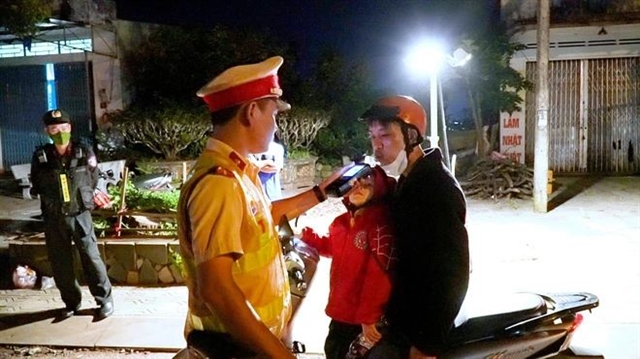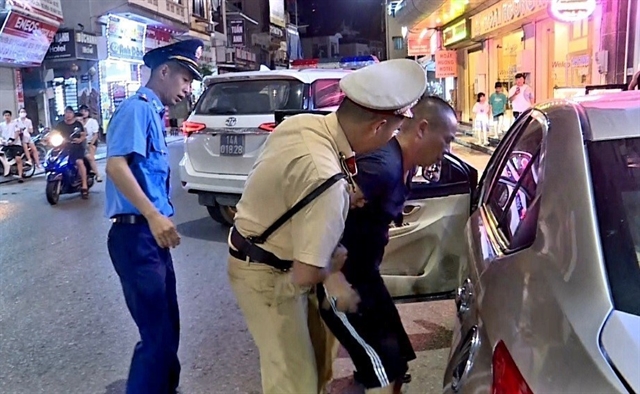 Society
Society

 |
| Traffic police restrain a taxi driver for causing public disorder and resisting on-duty officers in Hạ Long City. — VNA/VNS Photo |
HÀ NỘI — Traffic police will be allowed to use force, tactical gear or weapons to legitimately defend themselves when traffic violators attempt to resist or evade on-duty traffic officers, according to the draft law on Road Traffic Order.
The recently completed draft Law on Road Traffic Order by the Ministry of Public Security proposes certain regulations to prevent cases of resistance to on-duty traffic police officers.
Article 72 of the draft law specifies that if traffic violators fail to comply with inspection or control requirements and engage in behaviour resisting on-duty officers, police must clearly communicate the legal requirement to comply with on-duty officers.
At the same time, police will explain the rights and responsibilities of the violators, persuade them, and request immediate cessation of the violation, and compliance with inspection requirements.
If the violators refuse to comply with the orders or requests by on-duty traffic officers as prescribed by law, police will apply preventive measures, including the use of force, tactical gear or weapons to legitimately defend themselves.
However, the use of force, tactical gear or weapons should depend on the situation and the level of danger posed by the behaviour of the traffic violator.
In case traffic violators ignore police signals and attempt to flee, traffic officers will be allowed to chase the violators.
In Article 69, the Ministry of Public Security proposes the provision and the utilisation of vehicles, equipment, weapons and tactical gear for patrolling.
Traffic police will be equipped with road vehicles, technical equipment and smart devices for traffic management, as well as weapons and tactical gear as regulated.
Other participating forces coordinating with traffic police in patrolling and controlling traffic will be provided with suitable vehicles, technical equipment, weapons and tactical gear according to their assigned tasks.
Additionally, these forces will be allowed to use data storage devices provided by organisations or individuals for analysing, evaluating and forecasting the situation of road traffic order and detecting violations.
The draft also stipulates that weapons and support tools provided must be managed according to laws on the management and use of weapons, explosives and support tools.
According to Circular 32 of the Ministry of Public Security, effective on September 15, 2023, traffic police are equipped with handguns, rifles, submachine guns, electric guns, net guns, rubber bullet guns, pepper spray guns, marking guns, pepper spray canisters, electric batons, body armour, handcuffs and traffic control batons.
Patrolling forces are equipped with openly marked or disguised vehicles, technical equipment on road traffic routes, at police stations and on vehicles. The purpose is to detect and collect evidence of violations of road traffic laws and other regulations.
Statistics from the Traffic Police Department under the Ministry of Public Security showed that in the past three months of this year, there have been 39 cases of resisting on-duty traffic officers nationwide, resulting in 12 officers and soldiers being injured.
Police have apprehended 34 suspects.
The Criminal Code stipulates the crime of resisting on-duty officers with three levels of punishment, including non-custodial rehabilitation for up to three years; imprisonment from six months to three years, or imprisonment from two to seven years depending on the nature and severity of the offense.
Compared to the dangerous nature of this behaviour, the punishment levels seem lenient and insufficient as a deterrent. — VNS